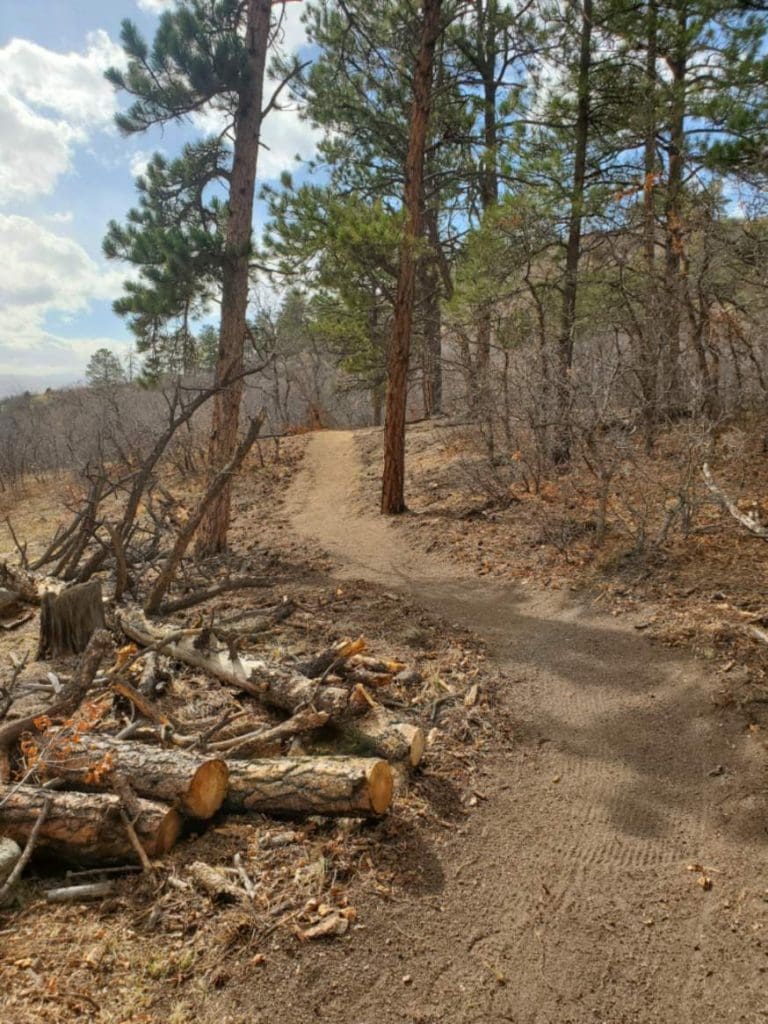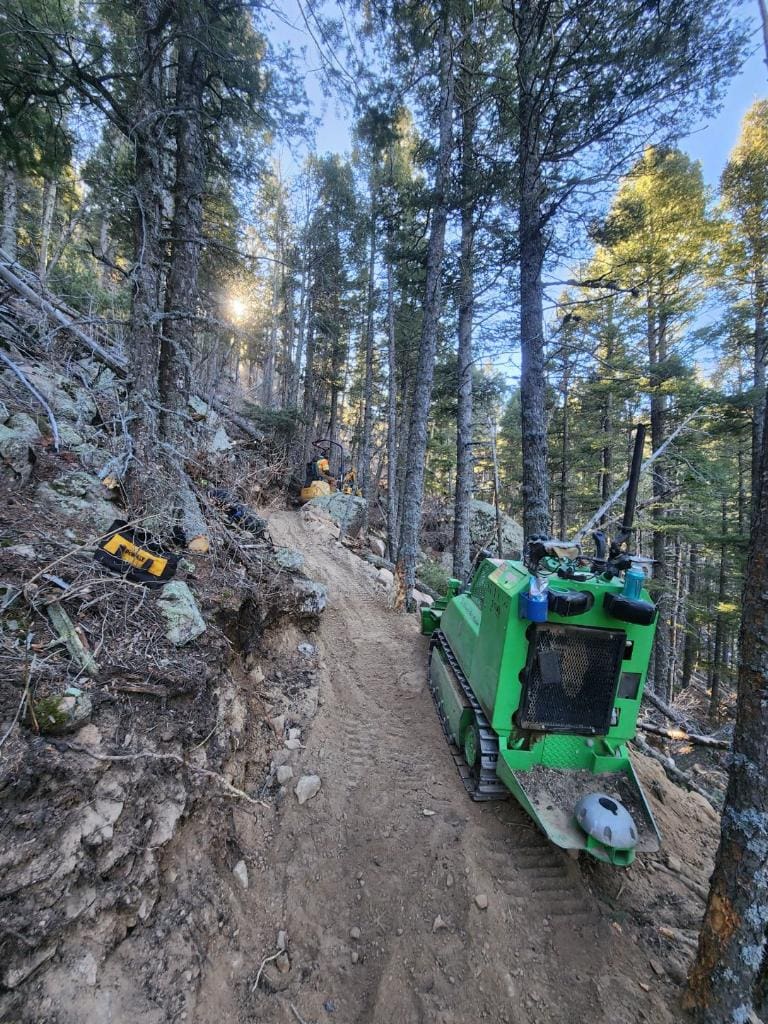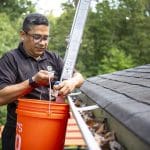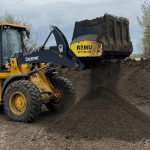
When you’re out hiking a trail, you probably don’t give a lot of thought to how it was constructed or maintained, but there are entire companies dedicated to the craft of trail work.
Judd Bryarly, CEO of Timberline Landscaping, based in Colorado Springs, Colorado, says they first started doing trail work in the early 2000s. At the time, their work mostly consisted of repairing existing trails that had been washed out and making drainage improvements.
In 2019, they partnered with well-known trail builder Tony Boone.
“He had previously mentored our team and helped us become members of the PTBA (Professional Trail Builders Association),” Bryarly says. “Together, we saw an opportunity for the future to really dedicate personnel to the trail building business, but in order to really compete in the trail market and be competitive though, we didn’t feel like the landscape name fit the mission. From there, Timberline TrailCraft was created.”
Boone is now the business development specialist for Timberline TrailCraft.
“The benefits of trails are far-reaching from physical fitness to emotional well-being,” Boone says. “The economic development opportunities of trail destinations towns, cities and regions are measured in the millions with the economic impact of the outdoor recreation industry in the USA approaching $1 trillion this year, according to the Bureau of Economic Analysis.”
Trail Building As a Service
Bryarly says the profit margin for trail building is like any other landscape project; it can be good or bad depending on how you bid and perform on the job.

Timberline TrailCraft can create all types of trails including ones for mountain biking, horseback riding, hiking and fitness. Clients can choose from different trail surface options as well. The company will not undertake a project if they cannot ensure sustainability.
In 1991 the National Park Service first defined trail sustainability as: “Sustainability on natural surface trail corridors is defined as the characteristic of a travel surface to support currently planned and future uses with minimal impact to the natural systems of the area. Sustainable trails have negligible soil loss or movement while allowing the naturally occurring plant systems to inhabit the area, recognizing required pruning and eventual removal of certain plants over time. Sustainable trails will not adversely affect the naturally occurring fauna. Sustainable trail design will accommodate existing and future uses while only allowing appropriate uses. The sustainable trail will require little rerouting and minimal maintenance over extended periods of time.”
Boone adds that in its simplest form, their goal is to keep visitors on the trail and water off the trail. The company uses a variety of specialized tools and equipment when constructing natural surface trails, including compact excavators to customer trail dozers that are 3-4’ wide. This allows builders to lay the trail while minimizing human impact.
Boone says safety considerations are essential to manage risks when building trails.
“This starts in the planning and design phase and continues through the construction phase and then enters the maintenance and management phase, which essentially last for the life of the trail.”
Boone encourages other landscaping companies considering branching into trail building get involved with local trail groups first and volunteer.
“The trail language and terminology is important to understand; participating will help bridge the gap,” Boone says. “Then, find a mentor to learn from. Trail building is quite a bit different from landscaping.”
Trail Maintenance
While Timberline TrailCraft works to build their trails sustainably, proper maintenance is minimal but still necessary. Boon says oftentimes trail maintenance is taken on by a client’s in-house crew of a county, municipal, state or federal agency.

“However, as the trail industry continues to evolve many agencies lack the staff to maintain their trails and are looking to professional trail contractors to perform the annual routine maintenance tasks,” Boone says. “Timberline TrailCraft has several routine maintenance contracts with local agencies. Trails are also frequently adopted by volunteer advocacy groups who help maintain them on a regular basis.”
Trail maintenance can consist of clearing any fallen timber or encroaching vegetation and cleaning out drainages.
“If any sections have developed ruts or gullies, additional drainage can be added to prevent water from running down the trail,” Boone says. “Typically in natural surface trail construction we like to see rolling contour design which allows effective drainage from undulating the trail grades thus creating effective drainage every 50-100′. Trail maintenance involves a variety of tasks starting with routine safety inspections to help land managers develop and budget for an annual trail maintenance plan.”
Trail Reclamation
Another aspect of trail work is trail reclamation. This helps eliminate social trails, which occur when users attempt to access areas that are not along an existing route. Social trails threaten sensitive plant and wildlife communities and alter the ecological integrity of an area.

Timberline TrailCraft helps restore these areas through a number of methods, including blocking shortcuts with trees and bushes, installing fencing and adding signage. The social trails are reclaimed via re-vegetation, native seeding, erosion control and the establishment of proper hydrology.
“Park and open space areas may inherit existing roads from past logging, ranching and/or mining activities that are often a fall-line alignment exceeding all the principles of sustainability creating a rutted surface that changes after every rainstorm,” Boone says. “These inherited routes are often rerouted to more sustainable alignments and closed and reclaimed, preferably with educational signage explaining the closure so people will respect. This allows the old route to regrow and heal, restoring proper hydrology to the area.”




